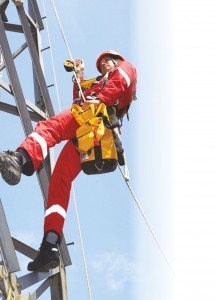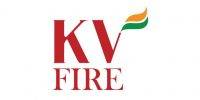 I would dare to say that perhaps the most important position in any department is that of the Training Officer. This person must be familiar with so many of the things that rescuers must know, such as in personal safety, like blood-borne pathogens, personal protective equipment for both medical and rescue situations, scene traffic control, and a lot of other things just to be safe in “rescue.” This is before one has to begin the career-long journey of being a rescuer.
I would dare to say that perhaps the most important position in any department is that of the Training Officer. This person must be familiar with so many of the things that rescuers must know, such as in personal safety, like blood-borne pathogens, personal protective equipment for both medical and rescue situations, scene traffic control, and a lot of other things just to be safe in “rescue.” This is before one has to begin the career-long journey of being a rescuer.
While it is routine for training to be a very large part of one's rescue career, both full-time personnel and volunteers, training is not ever “routine.” I say “routine” in the sense that, for those of us who have been in the fire and rescue service for years, we are routinely used to receiving and giving training of many types and often under strenuous circumstances. But in another sense, is training ever “routine”? Perhaps that depends upon how you look at training.
No one in the rescue or fire service would deny that training is everything. It is who we are and what we stand for, because without training, we are rather useless in the field. Most of us believe that training to a given set of working, proven standards is valuable for conformity of training, the skill performance in methodologies countrywide and inter-agency operability. Even the National Incident Management System (NIMS) assumes to a great degree that responding mutual-aid agencies will be able to function efficiently based upon comprehensive, relatively uniform training in standard methods nationwide.
Fire, rescue and EMS standards have become the norm today by which we all operate. Standard Operating Guidelines (SOG) is the byword. I have seen this concept develop over the last 20 years in all of the agencies I have been a member of across North Carolina. Before that we just did the best we knew how to do with what equipment we had and training we could receive. Often times we created our own training, scenarios and procedures, often times by trial and error. Yes, sometimes by more error through hard-earned experience. I dare say that there is not a senior member of any fire or rescue service who has not known training to have been sometimes learned “on the scene.” It's a thing called experience; lessons learned through diligent training, adaptation to local needs, regrettably, accidents in training, and yes, even equipment or procedural failures on the real rescues.
Standards about quality of rescue equipment and how it is used have greatly enhanced safety for the rescuers and our patients or victims, both in training and on the rescue scene. Research, testing, writing standards, and delivery of training all combine to allow today's emergency personnel to operate as safely and efficiently as possible. We have come to expect it of ourselves, and our communities have come to expect it of us, all the time, every day, without exception. Thus, we are at the age of standards.
Why the entire above dissertation to tell you what you already know? Because even today, there remains one key element short-changed in our absorption with being “in sync” with all current methodologies, techniques, procedures, standards, and application: we still fall short of teaching our young folks entering the rescue service one critical concept: the ability to think properly and act safely when the real-world rescues are not like the training scenarios! Said another way: teaching them how to safely and effectively “think outside the box.”
In my 42 years in the volunteer rescue service, I have had the challenging pleasure to train many people in rescue technology. During those years, I utilized rescue scenarios of nearly anything imaginable. After extensive training and skills review, I purposely put rescuers in harm's way in their training, because without the realism of knowing what the results could be of a skewed decision made under duress, how would this person function in a “real” rescue where, say, a mis-rigged rope rescue system failure means someone gets hurt or killed?
This goes to the point made in the paragraph above: we CANNOT fail in our teaching of new or young rescuers to develop the ability to think through a rescue and perform safely, most times under duress and pressure in the rescue itself.
There will never be enough time to possibly train all of our personnel for every possible scenario they could face. While there will be similar rescue scenarios, each will be unique in its own way. It is paramount that training include a thought-provoking format, one that allows our young rescuers to definitely use their hard-earned skills, but that also makes them think about how to solve problems in the field that are complex, or offer unusual challenges, and are, yes at times, dangerous. Scenarios should be such that a rescuer cannot always follow a “cookie-cutter” approach to performing a rescue, but rather must select the proper “tools from the rescue toolbox” and apply them in a safe, efficient manner.
Rescuers will react to situations faced in a real rescue based situation upon how they have been consistently and repeatedly trained. If they have never been faced with critical challenges in their training, how will they react when situations present themselves in real rescues? This is where the Training Officer must have the knowledge, skills and abilities (KSAs) to safely select and interject critical — and yes, sometimes dangerous — components into training. Learning and hard-earned experience go hand in hand here; experience comes from learning and then doing. Experience leads to more in-depth learning and so the cycle continues. The eventual result is a well-rounded rescuer with training and experience who has the ability to apply many rescue skills in a safe, effective manner. Can it get any better than this?
How do you teach rescuers to function as an efficient, effective team yet still be able to take the lead in a rescue situation where they must function confidently and independently of oversight? You give them the KSAs needed to do the job while teaching them to trust these KSAs, their equipment, and to trust in themselves! Training builds confidence and experience builds character. Character often leads to leadership. As a Training Officer, you should remember this: as the twig is bent, so grows the tree. Do you want your rescuers to be confident leaders? Then train them to be confident; give them the skills necessary to do rescues. Give them the scenarios many of them and often repeated. Accept nothing less from them than the best and then trust them as you assign them on real rescues. And remember this: there is no rescuer who hasn't made mistakes. The only rescuers who never make mistakes are the ones not doing anything.
I hope you can see now that the Rescue Training Officer is far more than just a training coordinator. The Training Officer is a skilled rescuer who can teach others the comprehensive KSA's needed for rescue. The Training Officer is a mentor who instills the confidence of a person to trust in themselves and their equipment. Finally, the Training Officer is the one who knows he or she can depend upon a rescuer to get the job done safely while in harm's way.because they were trained to think and then function properly when the going gets rough.
Remember, you are the one who helps mold trainees or new rescuers into confident, proficient rescuers. To me, there IS no more important position or office of greater responsibility.




















































